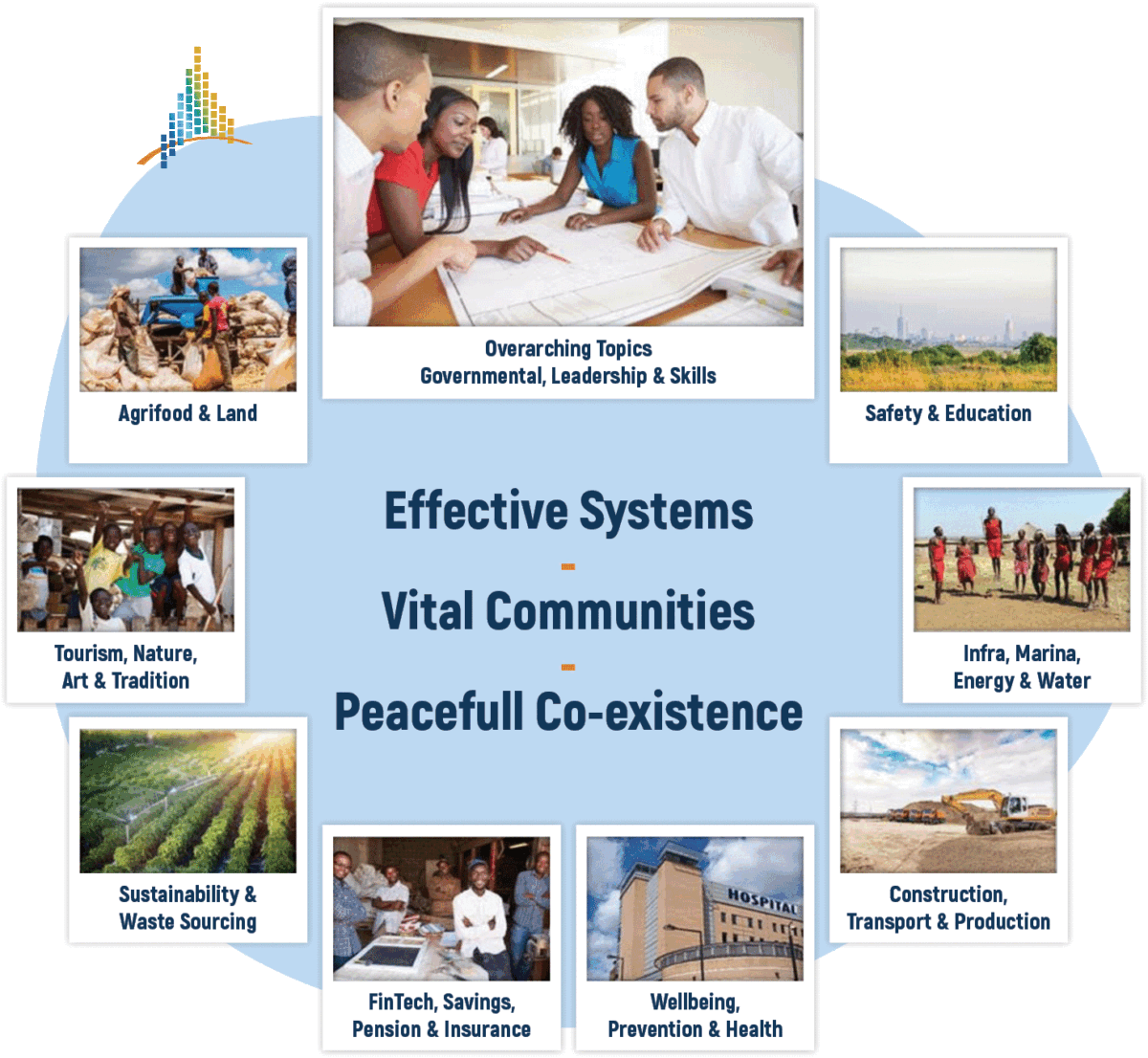Approach

For the (subnational) regional development approach at stake, we are joining, based on a so-called 6-Helixmodel comprising six intertwined stakeholder groups: funding parties, government, society groups & communities, developmental agencies, industry, and knowledge institutes.
Practical steps
for regional development
After regional selection based on national region benchmark, related stakeholder consultation and regional letter of intent we start: Our approach is based on a two-staged process:
- Stage 1: Development (6-18 months)
- Stage 2: Agile execution (3-6 years)
Stage 1: Development
During stage 1, we bring the stakeholders and partners together, formulate joint ambitions and work towards the operational stage. It contains five steps or interrelated elements:
1.
Coalition building
Connecting to the regional starting point & needs,
stipulating urgency, and chances for interest alignment.
2.
Ambition setting
Aligning current & new, strategic goalsetting, regional story and governance.
3.
Programming
(Re)programming of cross-sector KPIs, roadmaps, conditional topics & bottlenecks.
4.
Sourcing
Integrative acquisition of regular large-scale funding.
5.
Supplier selection and contracting
The outcome of step 3 is an agile developed realistic KPI-driven roadmap for the region (cross-sector and cross-topic). It forms the basis for steps 4 and 5 but still they are intertwined, requiring agility.
Stage 2: Agile execution
After the pre-stage, the agile execution starts. This stage typically takes about 3-6 years, purposefully overarching regular election periods and is characterized by intensive transformation-, conflict mitigation & interest alignment, governing, bottleneck management and monitoring & evaluation activities and marketing communication.

Our 14
distinctive
values
Our basics
1. Agility & Bottleneck mitigation
We work with an agile approach on continuous stakeholder connectivity, in which our team has short lines to all vertical levels (from governor to ground floor), horizontal (across parties in profit and non-profit) and lateral (from start to beyond election results) to see, address and mitigate various types of bottlenecks and root causes that prevent change. These bottlenecks encompass various areas, from technical and financial to sociological and other areas.
2. Broad focus
As Trinco Development, we ‘connect the dots’ between goals and programs, public and private sector, society groups, knowledge institutes, financial parties as well as politicians, their parties and policy makers. Our aim is to enable structurally resilient and stable regions: economically, sustainably, and socially. Ambitious? Yes. Innovative? Definitively. Achievable? Absolutely.
Our approach transcends traditional sector-, subject matter-, research- or product-focused approaches. For this, we combine proven transition management models with in-depth programs for cooperation, mediation, alignment, learning and change management.
3. In-depth focus
We differ from traditional development agencies, in our focus on the ‘hidden’ barriers (root causes) for breakthrough improvement on one side and on the integration of transformation- and context ingredients on the other side. Although the transformational interventions look apparently much less tangible and communicable than ‘bricks and mortar’, it is our experience from our Dutch and international transformation practice that both, emerging countries and their international sponsors, can generate more and faster tangible impact if they look beyond the obvious as a pivotal precondition. We choose the seemingly hard way, and we challenge our clients, partners, suppliers and funders to share this bold approach.
4. Regional starting point & customization
With a distinctive cooperation & alignment – approach to change, we take the topics that are relevant according to the regional leaders, key players and their population as a starting point, bringing it to the next stage in terms of tangible social, sustainable and economic (SDG) development, creating re-alignment and robustness in stuck stakeholder relationships and helping the leading stakeholders like government, society groups & communities, investment/funding parties, industry leaders, NGO’s, knowledge institutes, to let them shine and strengthen their impact, ambition, pride and reputational goals.

